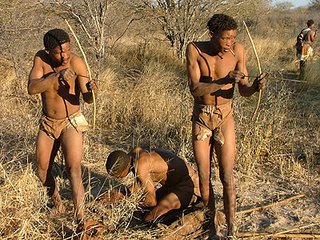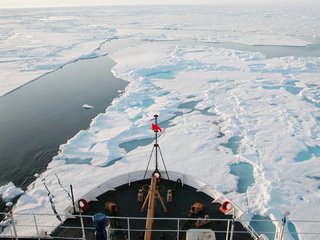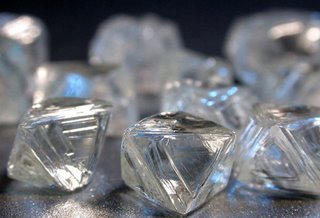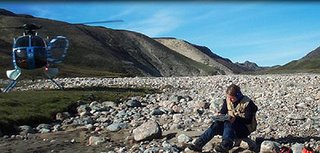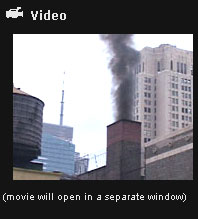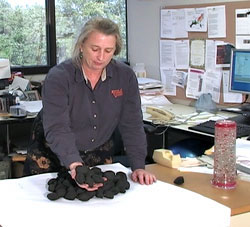New York City-In the spring of 2004, three young activists embarked on a mission to a part of the world they'd scarcely heard of before: Darfur, a region in western Sudan. They wanted to make a film from the perspective of Darfurians who’d fled attacks by Sudanese government-supported militias.

The resulting film,
Darfur Diaries, and a book of the same title, are meant to draw more international attention to the crisis in Sudan, which the United Nations says has displaced nearly two million people, and left 200,000 dead.
"Those who died, died over there,” an old woman matter-of-factly tells the camera in Darfur Diaries. “Some of our people were killed there. Some ran away. We took our kids by the hand to come here. We ran away. We carried nothing with us. We left everything there,” she says, “our cows, our animals. We ran by ourselves.”
It’s one of many affecting scenes in the hour-long documentary by three young Americans about the ongoing violence in Sudan. The project began in 2003, when Aisha Bain was an intern at a now-defunct non-profit, the Center for the Prevention of Genocide. Firsthand reports of terrible violence against the people of Darfur, in western Sudan, had begun to stream in. Bain tried to get news agencies to cover the story, but without success.
"Nobody was listening, nobody was paying attention,” Bain recalled in a recent interview. “And very few non-governmental organizations were talking about it, so nothing was really happening. And so my friend Adam and I decided, ‘Well, we'll go, we'll take a camera, and we'll shoot whatever we can, and we'll bring the information out.’ "
Joined by another friend, Jen Marlowe, Aisha Bain and Adam Shapiro traveled to Chad in the fall of 2004. Sudanese rebels helped them sneak back and forth across the border to meet people in refugee camps and film burned-out villages. Their film shows the conflict through the eyes of ordinary Darfurians, including children. The opening scenes, in fact, are animations based on children’s drawings of peaceful villages torn apart by air bombing raids and sword-wielding militias on horseback. Terrified villagers flee on foot, carrying their babies in their arms, as their huts burn behind them.

The animation yields to videotaped interviews of people in refugee camps, and some of the child artists. "Tell me what happened in this picture," an interviewer asks Ibrahim, a boy of ten, of a page in his book of colored pencil drawings. "The plane is bombing the village," he replies. He says his father was killed. His mother is here with him, living in the camp.
It is a common story. Another boy, whose brother was killed in front of him, cannot sleep at night. Many of the children and adults appear to be suffering from post-traumatic stress disorder, the filmmakers say. Yet even living in camps with few possessions, they’ve established schools for their children. The classes are mostly lectures held in the open; there are almost no books or school supplies.
Sudanese include hundreds of ethnic groups, self-identified as both African and Arab, who've intermarried for centuries. Darfurians are Muslim, and almost all speak Arabic. But the film says that with increasing desertification in Darfur, local conflicts over land and resources grew, beginning at least 20 years ago. Government-supported Arab militias, called Janjaweed, began attacking black Darfurian villagers with increasing frequency. And when a Darfurian rebel movement sprang up in 2003, the government of Omar Bashir began its own bombing raids against civilians.
Bashir’s attempt to hold onto power is key, according to the filmmakers, who say that the conflict in Darfur should not be seen in simple racial or ethnic terms. For example, Jen Marlowe says, the largest Arab tribe in Darfur has refused to participate in the government-backed militias. To some Darfurians, too, the militias are merely instruments of Omar Bashir’s government. As one man says in the film, “You use a gun to kill something. The government uses Arabs like a gun, to kill --- us.”
The film is sympathetic to the Darfurian rebels, showing them taking up arms only in self-defense. Many are still children. Yet Darfur Diaries also has a message of reconciliation. The same man who spoke about guns observes that many Arabs are suffering now, too. “Many are killed in battles. Some of them are suffering like we are suffering. Because of this, if I meet Arab, I [would] say to him: [this] is the wrong policy for the government to use in Darfur. I want the equality of all the people, not Arab, not African, all the same: the same citizens of the Sudan."
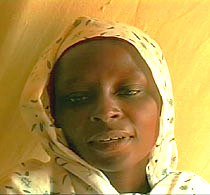
But the number of displaced Darfurians keeps growing, while the violence, including systematic rape, continues unabated. A young refugee woman says that even small girls and old women are victimized. And despite a peace agreement signed last spring, filmmakers Jen Marlowe, Aisha Bain and Adam Shapiro note that the latest news from Sudan is very bleak. They say that makes it even more urgent for people in other countries to do whatever they can to help.
"It does trickle back to Darfurians when there is a rally here and thousands and thousands of people show up,” Marlowe says. “That news trickles back to the refugee camps, and to people in the internally-displaced people camp, and at least people know that they are not entirely alone and not entirely abandoned, that even if governments haven't been doing all they should, there are people in the world that are standing with them."
Darfur Diaries is now also a book, interweaving Darfurians’ stories with the experiences of the three filmmakers in Sudan and Chad, and with political and historical accounts of the conflict. As with the film, some of the proceeds from the book, published by Nation Books, will go to assist schools for Darfur's children.
by Carolyn Weaver, VOA
Greener News Room
keywords::
DARFUR REFUGEES DIARIES SUDAN JANJAWEED
 As the year 2006 comes to an end, we take a look back at three hot button issues that we covered over the past year: the Iraq War, U.S. immigration, and the ongoing efforts to rebuild New Orleans after Hurricane Katrina.
As the year 2006 comes to an end, we take a look back at three hot button issues that we covered over the past year: the Iraq War, U.S. immigration, and the ongoing efforts to rebuild New Orleans after Hurricane Katrina.














